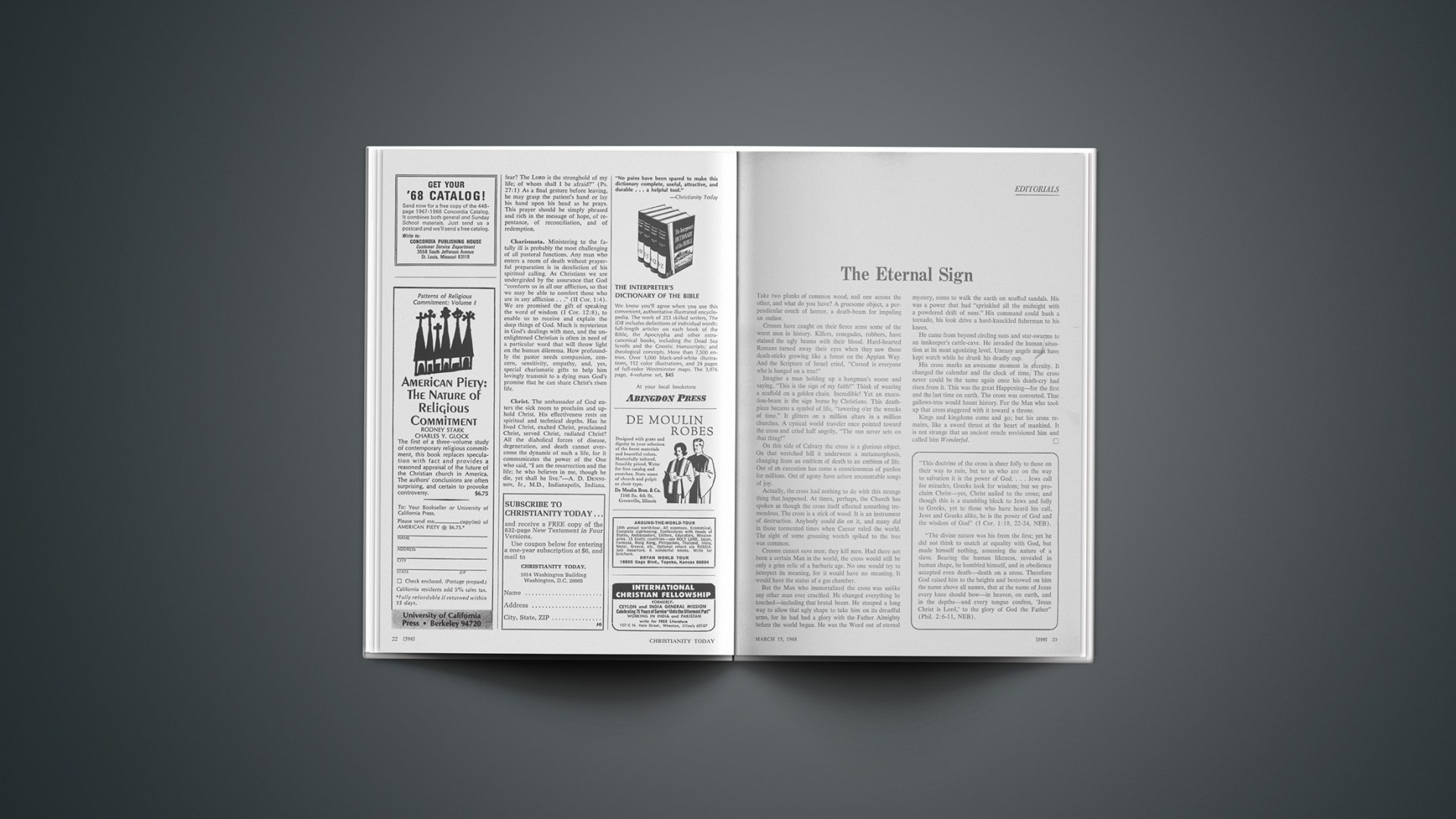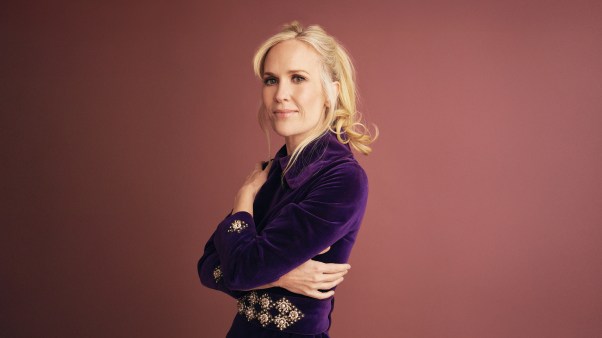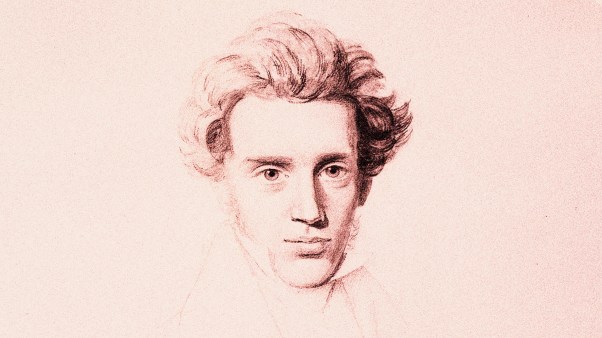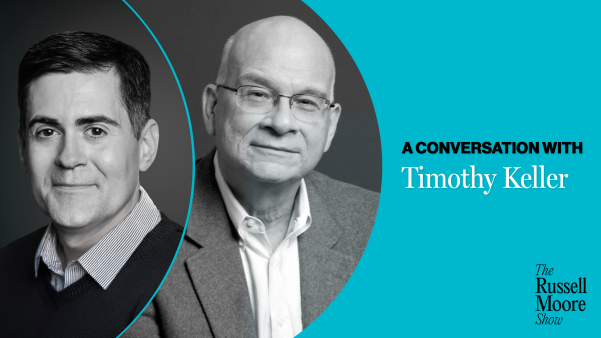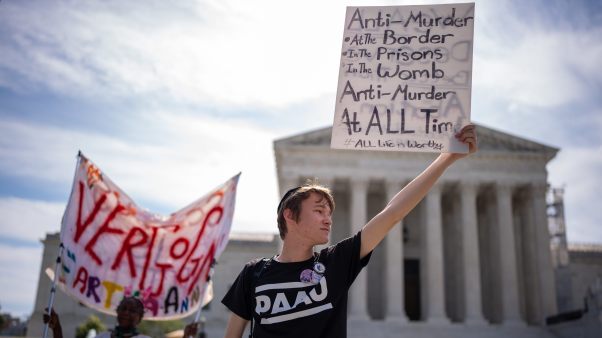Take two planks of common wood, nail one across the other, and what do you have? A gruesome object, a perpendicular couch of horror, a death-beam for impaling an outlaw.
Crosses have caught on their fierce arms some of the worst men in history. Killers, renegades, robbers, have stained the ugly beams with their blood. Hard-hearted Romans turned away their eyes when they saw those death-sticks growing like a forest on the Appian Way. And the Scripture of Israel cried, “Cursed is everyone who is hanged on a tree!”
Imagine a man holding up a hangman’s noose and saying, “This is the sign of my faith!” Think of wearing a scaffold on a golden chain. Incredible! Yet an execution-beam is the sign borne by Christians. This death-piece became a symbol of life, “towering o’er the wrecks of time.” It glitters on a million altars in a million churches. A cynical world traveler once pointed toward the cross and cried half angrily, “The sun never sets on that thing!”
On this side of Calvary the cross is a glorious object. On that wretched hill it underwent a metamorphosis, changing from an emblem of death to an emblem of life. Out of ah execution has come a consciousness of pardon for millions. Out of agony have arisen uncountable songs of joy.
Actually, the cross had nothing to do with this strange thing that happened. At times, perhaps, the Church has spoken as though the cross itself effected something tremendous. The cross is a stick of wood. It is an instrument of destruction. Anybody could die on it, and many did in those tormented times when Caesar ruled the world. The sight of some groaning wretch spiked to the tree was common.
Crosses cannot save men; they kill men. Had there not been a certain Man in the world, the cross would still be only a grim relic of a barbaric age. No one would try to interpret its meaning, for it would have no meaning. It would have the status of a gas chamber.
But the Man who immortalized the cross was unlike any other man ever crucified. He changed everything he touched—including that brutal beam. He stooped a long way to allow that ugly shape to take him on its dreadful arms, for he had had a glory with the Father Almighty before the world began. He was the Word out of eternal mystery, come to walk the earth on scuffed sandals. His was a power that had “sprinkled all the midnight with a powdered drift of suns.” His command could hush a tornado, his look drive a hard-knuckled fisherman to his knees.
He came from beyond circling suns and star-swarms to an innkeeper’s cattle-cave. He invaded the human situation at its most agonizing level. Uneasy angels must have kept watch while he drank his deadly cup.
His cross marks an awesome moment in eternity. It changed the calendar and the clock of time. The cross never could be the same again once his death-cry had risen from it. This was the great Happening—for the first and the last time on earth. The cross was converted. That gallows-tree would haunt history. For the Man who took up that cross staggered with it toward a throne.
Kings and kingdoms come and go; but his cross remains, like a sword thrust at the heart of mankind. It is not strange that an ancient oracle envisioned him and called him Wonderful.
“This doctrine of the cross is sheer folly to those on their way to ruin, but to us who are on the way to salvation it is the power of God.… Jews call for miracles, Greeks look for wisdom; but we proclaim Christ—yes, Christ nailed to the cross; and though this is a stumbling block to Jews and folly to Greeks, yet to those who have heard his call, Jews and Greeks alike, he is the power of God and the wisdom of God” (1 Cor. 1:18, 22–24, NEB).
“The divine nature was his from the first; yet he did not think to snatch at equality with God, but made himself nothing, assuming the nature of a slave. Bearing the human likeness, revealed in human shape, he humbled himself, and in obedience accepted even death—death on a cross. Therefore God raised him to the heights and bestowed on him the name above all names, that at the name of Jesus every knee should bow—in heaven, on earth, and in the depths—and every tongue confess, ‘Jesus Christ is Lord,’ to the glory of God the Father” (Phil. 2:6–11, NEB).
Laymen who are hoping that the political clergy will soften direct pressures upon government decision-makers and planners apparently are due for disappointment. Indications are, to the contrary, that the neo-Protestant social-action curia is expanding its behind-the-scenes strategy for even wider and deeper involvement. Several recent developments signify a continuing disregard by ecumenical leaders for the growing lay dissent.
One noteworthy sign of the times is a report by the Washington Post (February 19, 1968) of a secret conclave of ecumenical “insiders” to project more aggressive and extensive social involvement. Another significant sign is the prophecy voiced by Dr. David S. Stewart, of Emory University’s Candler School of Theology, to the National Council of Churches’ Division of Christian Education, to the effect that as secular involvement becomes a priority of modern Christianity, debate over doctrinal matters will subside. Echoing the mood of leaders who readily transmute theology into sociology, Dr. Stewart said: “I expect us to come to functional definition of our profession as the most fruitful basis for ongoing conversation.”
Funds For The Left?
A prediction that the differences of opinion in the role of the church in socio-economic and political affairs will become more and more a factor in financial campaigns was made by Manning M. Pattillo, Jr., President of the Foundation Library Center. Pattillo expressed his opinion while addressing the annual meeting last November of the American Association of Fund-Raising Counsel.
Pattillo pointed out that the churches are playing down traditional theological and doctrinal teaching and are adopting a new social orthodoxy. He viewed this trend as most apparent in the thinking of national church officials and in the seminaries which prepare men for the ministry.
The trend is encouraged by the mass media, observed Pattillo. Local clergy are moving in the same direction, though more slowly. However, stated Pattillo, a substantial fraction of active laity do not approve the new orthodoxy, and this is the attitude of many who have worked hardest for the church and have given most generously to it in the past.
“The cleavage between clergy and laity is serious in many places,” asserted Pattillo. “There is a tendency toward polarization and divisiveness—I am afraid that churchmen are not always skillful in reconciling conflicting ideas and groups—and there is increasing evidence of a dropping off of church membership and support in some denominations. This is accompanied by a decline in the number of candidates for the ministry and for other types of religious service. It appears likely that the trend will continue and perhaps accelerate.”
Turning to the financial side of the situation, Pattillo stated: “My prophecy is that the differences in opinion about the role of the church will become more and more a factor in financial campaigns. It will, I believe, be increasingly difficult to make a strong and distinctive fund-raising case for the church as it abandons its unique ‘spiritual’ character (the area in which it has had a monopoly) and becomes one among many social reform agencies. In its new role it will be in competition for loyalty and money with a wide range of governmental, political, and social service organizations.
“It remains to be seen whether churchmen who are social or theological liberals are equally liberal in their giving. The history of the churches that have been liberal for some time suggests a negative answer to this question.”
The Presbyterian Layman (Feb., 1968, issue).
The social-action planning session was described by the Washington Post as an effort to go beyond the kind of involvement currently carried out by the NCC. About two hundred clergymen and laymen from major metropolitan areas east of the Mississippi and Missouri River were on hand for the three-day, closed-door conference. The churchmen called their movement the “Communications Network of the Inter-Area Committee for Action and Renewal.” An object of the sessions, held at the National 4-H Center in Chevy Chase, Maryland, was reportedly to create a national organization of churchmen committed to militant social action.
Theological commitment to revolutionary social change was further seen in the conference on “Christians and Social Revolution” at Washington’s St. Paul College. Princeton Seminary Professor Richard Shaull opposed Jesuit Father Rock Caporale’s contention that revolutions are “an irrational mode of human action” that in some respects represent “an escape from freedom.” Shaull held that modern society needs “a new politics of revolution” to replace our dominant economic order and bureaucracy with another power base. He claimed that this power base could be provided by “radical biblical communities” in middle-class America that could infiltrate and subvert present institutions and be the catalyst for the future society.
Actions taken by the NCC General Board in San Diego last month show the determination of social-activist denominational officials to use the institutional church not only to become politically involved, but to advance perilous political policies. Recommendations included renewed efforts to seat Red China in the U. N., recognition of Castro’s Cuba, “acceptance of the existence” of the government of East Germany, and various policies that call for the United States to forsake unilateral decisionmaking in favor of international agreements. The ecumenists’ strategy is doubly damaging. By placing primary emphasis on secular goals, it diverts the Church from a more important spiritual mission. By advocating policies in line with Communist preferences, it weakens the position of America as the stronghold and guardian of freedom. The board purportedly represents the views found in leading American churches. But its heavy domination by liberal and even radical viewpoints indicates that the NCC does not practice the democratic policies to which it gives lip service, and that it is far afield from the spiritual priorities for which the Church exists.
The ecumenical establishment has already become largely an unrepresentative bureaucracy heedless of widespread dissent in the ranks of both laymen and ministers. Dr. Manning M. Pattillo, Jr., recently told the American Association of Fund-Raising Counsel (see accompanying quotation, “Funds for the Left?”) that the substitution of socio-political orthodoxy for theological orthodoxy will discourage financial support by those who view the Church of Christ, not as one among many social reform agencies, but as a body endowed with a uniquely spiritual mission.
The core leadership of the political clergy is supplied by influential, self-asserting churchmen among the two hundred denominational and council secretaries of social action and overseas missions, their executive staff colleagues, professors of ethics, and other church leaders mainly interested in social issues. They are now striving to overcome the image of a self-asserting social-action curia by shifting implementation to socially minded churchmen in all denominations and cities. For years this unrepresentative bureaucracy has promoted its politico-economic declarations as virtually the voice of Protestantism. Not only are these pronouncements often formulated in disregard of truly representative processes, but they repeatedly reflect the personal bias of salaried leaders of the ecumenical establishment who unhesitatingly assert their own opinions as expressions of the conscience of the Church.
The Cross of Jesus Christ was a stumbling block to the Jews. To the Greeks it was foolishness. But to modern man it has become a symbol of despair. The God-forsakenness of Jesus at Calvary seems to signify the God-forsakenness of the twentieth-century world. Atheism and nihilism find symbolic expression of their world view in a secular reading of Good Friday. For such minds, the Cross is a sign of the nothingness that finally engulfs all men and things.
This outlook of the contemporary unbelieving world embodies a strange reversal. For this was the last thing that the Cross meant to the early disciples. The Cross meant death, even a horrible death. But Jesus’ death was never viewed from a quivering precipice this side of nothingness. It was viewed as a staggering, almost un-fathomable event in a great series of God’s acts of self-revelation and redemption and as the determinative act that effected man’s salvation. For the early Christians, the Cross was the defeat without which there would never have been a victory. It was the death without which there would never have been resurrection life.
For the early Christians, and indeed for Christians in all ages, the Cross is the symbol of atonement. It is a symbol of judgment upon all the sins of humanity—the failures, hatred, wickedness, lost hopes, and even the despair. But precisely because it is that, because it is judgment, it is also the symbol of a future free from judgment. If Jesus did not bear God’s wrath, then there is no future for anyone, least of all for the men of our world. But if he did bear God’s judgment, as the Bible says he did and as all Christians believe he did then there is a glorious future for all who align their lives with his. Jürgen Moltmann speaks of this dimension:
If the modern a-theistic world thus comes to stand in the shadow of Good Friday, and Good Friday is conceived by it as the abyss of nothingness that engulfs all being, then there arises on the other hand the possibility of conceiving this foundering world in theological terms as an element in the process of the now all-embracing and universal revelation of God in the cross and resurrection of reality [The Theology of Hope, p. 169].
He adds that for the Christian, “the cross is the mark of an eschatological openness which is not yet closed by the resurrection of Christ and the spirit of the Church, but remains open beyond both of these until the future of God and the annihilation of death.”
Seen in proper perspective, the Cross is exactly the opposite of what modern minds imagine it to be. In the first place, it is the evidence that man is not forsaken. It is evidence that the one by whom man feels abandoned and before whom he stands condemned actually loves him and strives to draw him to himself. John’s Gospel states that “God so loved the world that he gave his only Son” (John 3:16). And Paul says that “God shows his love for us in that while we were yet sinners Christ died for us” (Rom. 5:8). D. M. Baillie is certainly close to the truth of these statements when he comments: “The most remarkable fact in the whole history of religious thought is this: that when the early Christians looked back and pondered on the dreadful thing that had happened, it made them think on the redeeming love of God” (God Was in Christ).
Second, far from standing for the alienation of man from God, the Cross actually stands for reconciliation. It is the bridge that connects eternity to time, that vaults the gulf between the holy and that which is unholy and lost beyond self-reformation. Colossians relates that the fullness of God was pleased to dwell in Christ, that through him God might “reconcile to himself all things, whether on earth or in heaven, making peace by the blood of his cross” (1:20).
The Cross of Christ is also the reversal of all human values. For there weakness becomes strength, foolishness becomes wisdom, loss becomes gain, suffering becomes a gate to glory. “The Cross represents the inversion of all human values. The human is put to death; and out of death comes life” (John Courtney Murray, Social Order). Thus, for Christians the Cross becomes the signpost that marks a new pathway for life, a path of self-sacrifice for others. All the Christian virtues follow from the Cross.
Finally, the Cross is a symbol of power, not the dynamic power of the resurrection—life out of death and victory—but the winsome power of a life poured out for others. It is the power to which Jesus alluded when he said, “I, when I am lifted up from earth, will draw all men to myself” (John 12:32). And so he has, down through the ages. No other standard in history has been so able to rally men to it as the Cross of the crucified Christ.
All this needs to be said again in an age stained with blood, weary of virtue, and bound by individual and collective guilt. If the floodtide of despair now at disaster level is to be successfully checked, then the Cross must be restored to Christianity. For many, it is still a scandal and foolishness. For others it is a symbol of despair. But for those who are being saved, it is the wisdom and power of God. It is the sublime token of God’s gracious, reconciling presence in the midst of a fallen and distressed humanity.
LOSS OF AN OLD TESTAMENT GIANT
“I have not shirked the difficult questions.…” That quotation is inscribed on the portrait of Dr. Robert Dick Wilson that hangs in the faculty room of Westminster Theological Seminary. It was also inscribed in the life of Dr. Edward J. Young, a successor to Dr. Wilson in the Old Testament chair at Westminster, and like Wilson a doughty defender of the inspired Scriptures. When sudden death ended Professor Young’s career, he left an evangelical legacy of a lifetime of biblical scholarship.
Thy Word is Truth, title of one of Young’s many books, asserts his basic conviction. He believed the Bible, simply and devoutly. Yet he correlated his faith and his scholarly labors. Personally modest and retiring, he was driven by conviction to contend for the faith; the power of his preaching somewhat astonished those who enjoyed his quiet conversation. For him, unbelieving biblical scholarship was a contradiction in terms.
Professor Young’s own scholarship gained an international reputation. He mastered nearly thirty languages as tools of research; in his travels abroad he preached in German, read lectures in Spanish, and chatted with bus-drivers in Arabic. He insisted that his graduate students “get the languages.” In addition to Hebrew, Arabic, and Aramaic, he taught Babylonian, Syriac, Ethiopic, and ancient Egyptian. Frequently he complained about scholars who erected critical castles on secondary sources.
He was ready to stand against the current. His three-volume commentary on Isaiah argues with patient cogency for the integrity of that book (the first volume has appeared in the “New International Commentary on the Old Testament,” an Eerdmans series of which he was editor).
He has left a varied legacy: Introduction to the Old Testament, a landmark in conservative scholarship; devotional writings (Isaiah 53; Psalm 139); language study aids (Arabic for Beginners, Old Testament Hebrew for Beginners). Beyond his books are the men he has trained, now scattered around the world, teaching the Old Testament in Tokyo or preaching it in Arabic in Africa.
His witness points a way for scholars who are willing to pay the price of toiling in the precious things of the Word of God. There is a radical scholarship of faith that humbly bows before the Lord and listens to his Word, and E. J. Young was a living demonstration.

